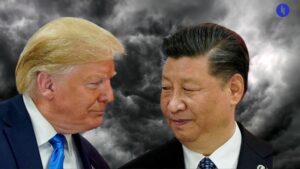It’s been three weeks since Israel and Hamas signed a deal that put a tentative end to their ~16 months of devastating conflict.
The pact ramped up the flow of aid into the strip and enabled the return of an initial 16 Israeli hostages held by Hamas and more than 730 Palestinian prisoners in Israel. Another 17 Israeli hostages are still due for exchange with ~1,200 Palestinian prisoners.
But now, halfway through the deal’s first phase, it’s had a wobbly few days. Here’s why.
On Monday, Hamas warned it was going to delay this weekend’s scheduled release of the next three Israeli hostages over what it alleges have been Israeli breaches of the deal: blocking returning Gazans, opening fire on civilians, and limiting the entry of aid.
Stay on top of your world from inside your inbox.
Subscribe for free today and receive way much more insights.
Trusted by 129,000+ subscribers
No spam. No noise. Unsubscribe any time.
For its part, Israel previously condemned Hamas delays, and argued it was slowing Gazan returns in response. But this time, Netanyahu described the Hamas message itself as a breach, and ordered a troop build-up while warning on Tuesday, “if Hamas does not return our hostages by Saturday noon, the ceasefire will end and the IDF will resume intense fighting“.
That’s when a bit of confusion broke out: was Netanyahu talking about the same three hostages due for release tomorrow (Saturday), or was he now talking about all remaining hostages? Israeli officials gave conflicting answers, while Donald Trump chimed in too.
In parallel, public opinion splintered in Israel: hostage families panicked, while hard-liners cited the chaos as vindication that Israel should never have done the deal in the first place. And some of the Israeli securocrats who negotiated the deal worried that this could all now just endanger hostage lives.
Meanwhile, mediators scrambled, and their efforts seemingly paid off — by yesterday (Thursday), Hamas was citing “positive” talks with Egypt and Qatar on getting caravans, tents, construction equipment, medical supplies, and fuel into Gaza. The group was therefore agreeing to release the scheduled three Israeli hostages this weekend after all.
So we’ll see this weekend what exactly happens, but the deal seems back on track for now.
Yet still… this wobble has raised questions around its overall integrity.
First, the repeated recriminations have eroded whatever trust was there to begin with, while emboldening hard-liners, and making future compromises seem more elusive.
Second, everyone’s meant to start talks on the deal’s second phase this week, with Hamas releasing the last ~60 hostages (24 alive) in return for Israel’s full withdrawal starting early March. But those talks haven’t started, partly because everyone’s still trying to salvage phase one, but also because Hamas has used each release as such a public show of force (contrary to Bibi’s war aims), that some hardliners now want him to go back in.
And third, that’s all played out while Donald Trump continues to reiterate his vision for the US to “take over” the Gaza strip, push two million Palestinians into Egypt and Jordan (both heavily dependent on US aid), then rebuild and/or re-develop Gaza.
And while polls suggest many Israelis support this idea, it’s hitting outright rejection elsewhere given the many hurdles, including…
- Legal: Article 49 of the 4th Geneva Convention is one of several laws prohibiting forcible transfers
- Ethical: War crimes or crimes against humanity erode America’s moral standing
- Logistical: Relocating two million people isn’t immediately feasible
- Security: Any attempt would subject US troops to attacks in Gaza and elsewhere
- Political: Trump campaigned on delivering less intervention, not more, and
- Geopolitical: The plan would destabilise two critical US security partners (Egypt and Jordan) — the last time the region took an influx of Palestinians, it led to one civil war in Jordan then another in Lebanon.
Still, it’s spooked Egypt into calling an emergency Arab Summit on February 27, aiming to present “a comprehensive vision for the reconstruction of the Gaza Strip”, without displacing Palestinians.
INTRIGUE’S TAKE
There’s speculation around what exactly Trump is up to here: perhaps it’s another ‘threaten then negotiate’, or maybe he’s trying to jolt the region into some kind of new security equilibrium with Israel — like, say, how Trump 1.0’s threats to leave NATO might’ve shocked Europe into owning more of its own security vis a vis Russia (though Russia’s invasion of Ukraine clearly nudged Europe along too).
Whatever’s going on, the US president’s comments might’ve also hardened sentiment within Hamas — from its perspective, why return hostages (the group’s last leverage) if the war is still set to resume, or if the end goal is just to push Palestinians out of Gaza?
And that, in turn, might’ve also hardened sentiment among the Houthis in Yemen — they’re already threatening to resume attacks against shipping through the Red Sea.








